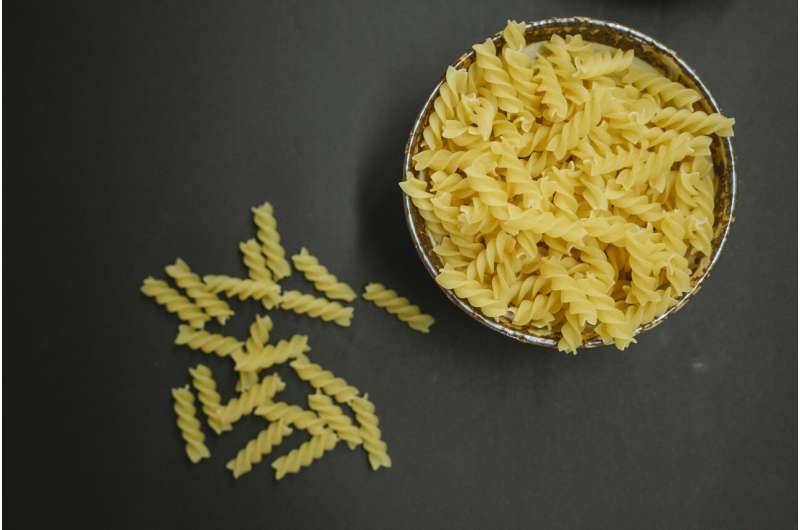Credit: Klaus Nielsen from Pexels
A microalga originally isolated from volcanic springs has all it takes to become the next 'superfood' on the market. Compared to Spirulina—a similar organism that's been popular as a food and feed supplement for half a century—Galdieria is cheaper and easier to grow, and even more nutritious. In a closed-circuit reactor, it can convert organic waste into valuable proteins. Those are the conclusions of the Ph.D. research of Fabian Abiusi of the group Bioprocess Engineering at Wageningen University & Research. He will defend his thesis this Monday, March 29.
"Microalgae-based products have been around for a long time," says Fabian Abiusi, a biotechnologist originally from Italy, "but in general, they are costly to produce. When these algae are grown in the dark, they convert only half of their organic substrate into biomass, while when they are grown under illumination and use carbon dioxide, they generally yield only low biomass densities. Both strategies require a costly system for efficient gas exchange. In my Ph.D. research, I developed a new cultivation method for microalgae that doubles productivity while halving the production costs."
Oxygen balance
The trick, as Abiusi explains, is growing the microalgae in a so-called mixotrophic photobioreactor: a reactor that provides its algae with light as well as an organic substrate such as sugar. Microalgae, like all plants, use sunlight as an energy source to convert carbon dioxide into organic molecules and oxygen. This process is called photosynthesis. In the dark, however, the opposite happens: plants use oxygen and organic molecules and release carbon dioxide. Industrial fermentation uses this latter principle to produce various biomolecules, such as proteins, medicines or alcohol from an organic substrate.
"In those processes, usually only half of the organic carbon is converted into biomass, while the other half is lost as carbon dioxide," says Abiusi. "However, in a mixotrophic photobioreactor, you can couple the production of oxygen via photosynthesis to the consumption of oxygen in the cell's metabolism. Similarly, almost all of the carbon dioxide produced by the microalgae is used again by the photosynthesis, making this process almost carbon neutral, and very efficient. You have double productivity, without the need for electric energy for aeration or carbon dioxide."
On the market
As an added bonus, Galdieria turns out to be much richer in protein than Spirulina. Abiusi and colleagues discovered this by unraveling the full profile of the microalga's amino acids—its protein building blocks. "Two thirds of Galdieria's dry weight is amino acids," says Abiusi, "which is more than is the case for meat, milk, cheese and eggs." Specifically, the microalga contains much cysteine and methionine, two sulfur-containing amino acids, which it owes to its evolution in sulfur-rich volcanic springs. Abiusi: "These amino acids are limited in plants, which is one of the reasons that it is difficult for us to derive well-balanced nutrition from a plant-based diet."
In conclusion, Galdieria may be the next superfood, according to Abiusi. It has the potential to help feed the world, improve human health, transition to a more plant-based diet, reduce energy use, and make good use of organic waste. "We now have a proof of principle," concludes the bio-engineer. "I'm working with a start up in Wageningen, called Algreen, to optimize and scale up the process, using food waste as a substrate. We expect approval by the European Food Safety Authority in the course of next year. In a few years' time, you'll find Galdieria products on the market, I have no doubt about that."
Provided by Wageningen University
























